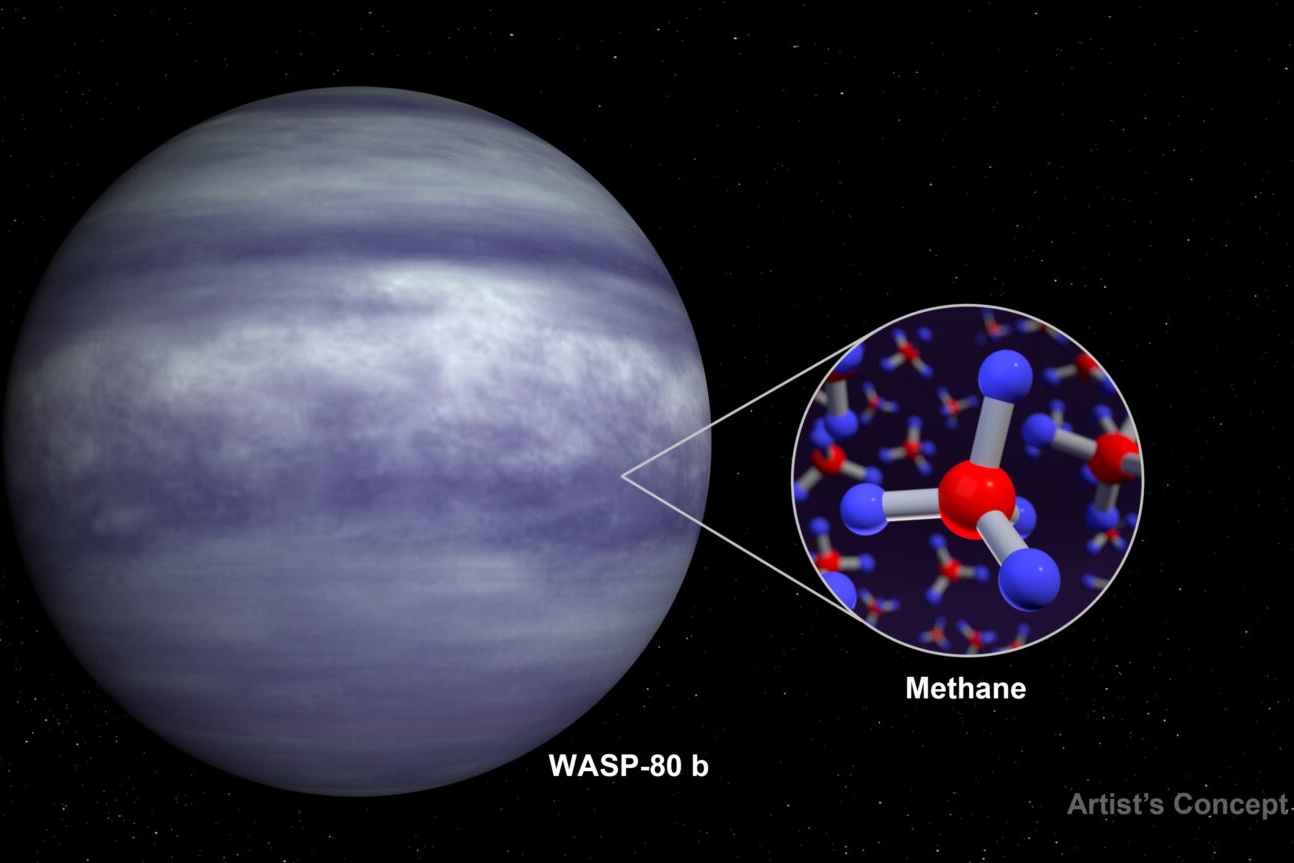BAERI’s Taylor Bell and a team of researchers have identified the presence of methane in the atmosphere…
Vanessa Polito contributes to new understanding of solar flares
A paper featuring Vanessa Polito‘s work on solar flares was published today in the journal Nature Astronomy. Polito is a co-author on the study, which is a collaboration with lead author Chengcai Shen of the Harvard-Smithsonian Center for Astrophysics (CfA), Bin Chen of physics at The New Jersey Institute of Technology (NJIT), Sijie Yu of NJIT’s Center for Solar Terrestrial Research, and CfA researchers Kathy Reeves and Xiaoyan Xie.
You can read their paper here, and learn more about the project by reading the following press release from NJIT.
New Study Challenges Core Understanding of How Efficient Solar Flares Release Their Energy
With NASA observations and 3D modeling simulations of the Sun, an international research team’s findings challenge long-held interpretation of an observational phenomenon key to explaining how energy is released during the solar system’s largest explosions.
New findings published Jan. 27 in the journal Nature Astronomy have called into question decades of theoretical understanding used by astrophysicists to interpret an observational phenomenon central to understanding energy released during powerful eruptions from the Sun, known as solar flares.

Solar flares, which are triggered when magnetic field lines break and reconnect above the Sun’s surface — referred to as magnetic reconnection — can release a large amount of energy, energetic charged particles, and intense electromagnetic radiation, possessing the potential to disrupt communications technologies on Earth.
For nearly two decades, scientists studying solar flares have observed dark, finger-like plasma outflows known as supra-arcade downflows (SADs) above their bright, arcade-like magnetic loops in extreme ultraviolet and X-ray wavelengths. These outflows have been considered key evidence of major solar flares being powered by magnetic reconnection which often occurs in enormous electric current sheets, offering a critical data point for estimating the rate of a solar flare’s energy release.
However, researchers have been puzzled to observe these plasma flows travel substantially slower than speeds predicted in established theories, casting doubt over past interpretations of solar flares and similar explosive events that involve magnetic reconnection.
“We wanted to know how these structures occur,” said lead author and astronomer Chengcai Shen of the Harvard-Smithsonian Center for Astrophysics (CfA) in a statement. “What’s driving them and are they truly tied to magnetic reconnection? … This is not predicated by classic reconnection models, which show the downflows should be much quicker. It’s a conflict that requires some other explanation.”
“The speed of the reconnection-driven plasma outflows is an important observational input to determine how efficient solar flares release their energy,” said Bin Chen, associate professor of physics at NJIT and second-author of the study. “The latter is fundamental to our understanding of the underlying physics of solar flares and similar, but often more violent, explosive events across the universe. Therefore, if our interpretation of these key observed features is incomplete, then our current knowledge on solar flare energy release may be challenged.”
To learn more, the team combined 3D numerical modeling of solar flares, led by Shen at the Harvard-Smithsonian Center for Astrophysics, with observations of solar flares captured by the Atmospheric Imaging Assembly (AIA) on board NASA’s Solar Dynamics Observatory (SDO). The AIA takes images of the Sun every twelve seconds in seven different wavelengths of light to measure variations in the Sun’s atmosphere.
The team’s analysis, along with previous observational data, showed there are plasma flows moving at speeds of ∼50–200 km/s, well below long-established theoretical estimates of roughly 1,000 km/s.
Surprisingly, the results revealed that these slower plasma flows are located in a turbulent “interface region” sandwiched between the reconnection region and the bright flare arcade, rather than the reconnection region itself — contrary to the previous interpretation.
“Outflows are propelled by reconnection at nearly thousand kilometers per second, but when they reach the flare arcade they encounter an obstacle, and then slow down,” explained Sijie Yu, study co-author and astronomer with NJIT’s Center for Solar Terrestrial Research. “Such a violent encounter ‘stirs up’ the surrounding flare environment and creates this turbulent interface region.”
As a result, finger-like structures develop, observed as dark and relatively slow plasma flows — but most appear to not be driven by magnetic reconnection after all.
“What our study suggests is that most of the observed dark plasma outflows are not the genuine reconnection-driven outflows themselves, but are probably secondary flows formed below the reconnection current sheet,” said Yu.
Chen says the study’s findings shedding fresh light on these mysterious downflows could require physicists to rethink how fast solar flares release energy.
“We are reinterpreting an important phenomenon underlying the reconnection process. … Such a reinterpretation could prompt a re-examination of our current understanding of the energy release in solar flares.”
Additional co-authors of the paper include CfA researchers Kathy Reeves and Xiaoyan Xie, as well as Vanessa Polito at the Bay Area Environmental Research Institute. This research was supported by grants from the National Science Foundation.


